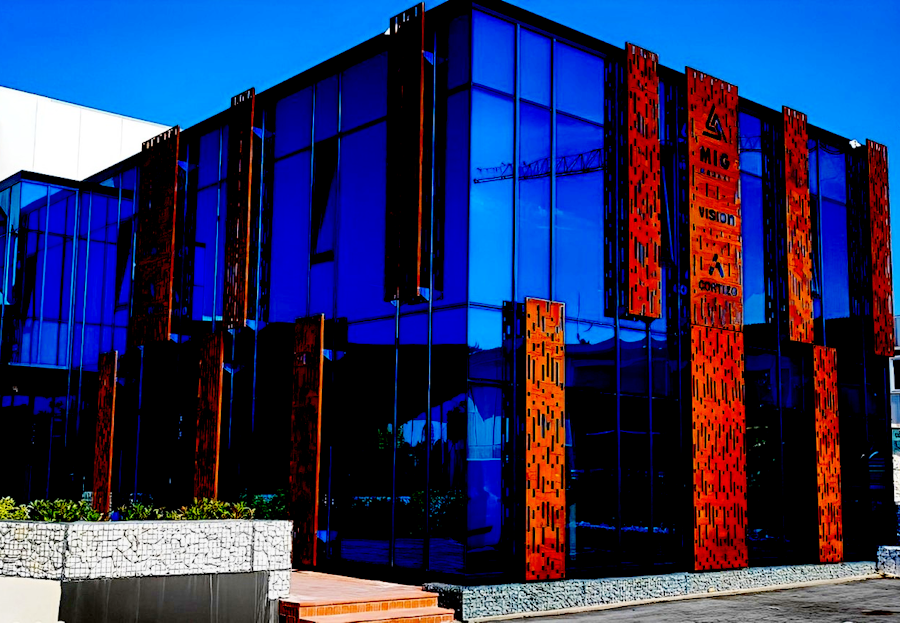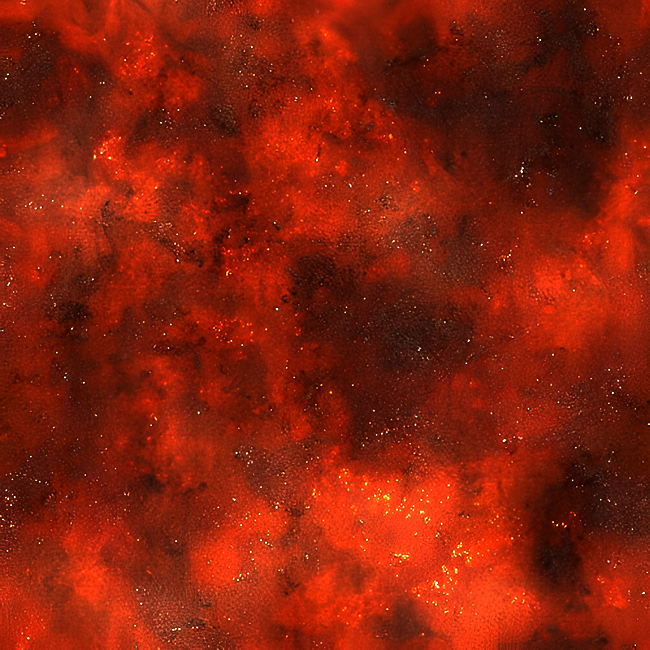Corten steel (COR-TEN steel, corten steel, corten, Corten Steel) - this is weather-resistant steel (under certain conditions) or "rusty" steel, which belongs to the group of alloy steels that have high resistance to atmospheric corrosion. This is the case when the rust itself on the surface of the metal prevents the spread of rust deep into the material and makes its further destruction impossible.
Corten steel (sometimes known as weathered steel) is a group of steel alloys that are often used in exterior construction. Corten Steel was designed to eliminate the need for painting, and if left outside to the elements, will take on a rusty appearance in just a few months.
History of corten steel
Corten steel, also known as "light rust steel", "patinated steel" or "Corten steel", was invented in the 1930s in the USA by United States Steel Corporation. The product was originally developed for use in the construction of railway cars for transporting coal and other structures where corrosion resistance and durability were important.
Over time, corten steel has become a popular material for architecture and design. Its rusty aesthetic is considered attractive and elegant, and it can add a unique character to any building.
Today, Corten steel remains a popular choice for architects, designers and artists. Its stability, durability and aesthetics make it a valuable material for a variety of projects.
COR-TEN - this is a registered trademark United States Steel Corporation. The name COR-TEN is derived from two main distinguishing properties of this type of steel: corrosion resistance (corrosion resistance) and tensile strength (tensile strength). The original COR-TEN steel was designated A242 ("COR-TEN A") by ASTM International. It is no longer available. Available Finish Steel ASTM A606-4, A588 и A847.
Here are some of the key milestones in the history of the invention of corten steel:
- 1930s: United States Steel Corporation develops the first corten steel.
- 1940s: corten steel is used in railway cars and other structures.
- 1950s: is becoming a popular material for architecture and design.
- 1960s: the use of corten steel is growing in bridge construction and other infrastructure projects.
- 1970s: corten steel is becoming a popular material for sculptures and other art objects.
- 1980s: corten steel use is stabilizing, but it remains a popular choice for architects and designers.
- 1990s: corten steel is used in some major architectural projects such as the Guggenheim Museum in Bilbao, Spain.
- 2000s: steel is becoming increasingly popular in green building because it does not need painting and has a long service life.
- 2010s: corten steel is used in a wide range of projects, from residential buildings to public buildings.
Chemical composition
The chemical composition of corten steel varies depending on the specific type, but in general it contains the following elements:
- Iron (Fe): the main component of steel, making up about 65 - 70%.
- Chromium (Cr): 0,5-1,25%. Adds corrosion resistance.
- Copper (Cu): 0,5-1%. Improves atmospheric corrosion resistance and strength.
- Nickel (Ni): 0,25-1%. Increases corrosion resistance and strength.
- Phosphorus (P): 0,04-0,1%. Improves weldability and resistance to atmospheric corrosion.
- Sulfur (S): 0,03-0,05%.
- Magnesium (Mn): 1-2%. Increases strength and rigidity.
- Silicon (Si): 0,1-0,4%. Increases strength.
In addition to these main elements, other impurities may also be present in smaller quantities in Corten steel, such as titanium, aluminum, vanadium and molybdenum.
| ASTM | C | Mn | P | S | Si | Ni | Cr | Mo | Cu | V | Nb | Fe |
| A588 Grade A | <0.19 | 0.80-1.25 | <0.030 | <0.030 | 0.30-0.65 | <0.40 | 0.40-0.65 | - | 0.25-0.40 | 0.02-0.10 | - | Other |
| A588 Grade B | <0.20 | 0.75-1.35 | <0.030 | <0.030 | 0.15-0.50 | <0.50 | 0.40-0.70 | - | 0.20-0.40 | 0.01-0.10 | - | Other |
| A588 Grade K | <0.17 | 0.50-1.20 | <0.030 | <0.030 | 0.25-0.50 | <0.40 | 0.40-0.70 | <0.10 | 0.30-0.50 | - | 0.005-0.05 | Other |
| A606-4 | <0.22 | 1.00-1.25 | <0.040 | <0.040 | 0.30-0.65 | <0.40 | 0.40-0.65 | - | <0.20 | 0.02-0.10 | - | Other |
| A847 | <0.22 | 0.90-1.25 | <0.040 | <0.050 | 0.15-0.30 | <0.40 | 0.40-0.65 | - | 0.25-0.40 | 0.02-0.10 | - | Other |
It is important to note that there is no single standardized chemical composition of corten steel. Different manufacturers may have their own specifications that vary slightly.
Main characteristics
- Protective layer of rust: due to its special chemical composition, a dense protective layer of rust called patina forms on the surface of Corten steel. This layer of rust, unlike ordinary rust, does not destroy the metal, but actually protects it from further corrosion.
- Strength and durability: Corten steel has high strength and resistance to mechanical damage. Due to its resistance to corrosion, it can serve for decades without additional protection.
- Aesthetic appearance: the rusty layer of Corten steel has a unique and aesthetically pleasing appearance that changes and develops richer shades over time, making it a popular choice for architects and designers.
- Economy: corten steel does not require painting or other protective coating, making it a cost-effective choice in the long term.
Application
 Due to its unique properties, Corten steel is widely used in various industries:
Due to its unique properties, Corten steel is widely used in various industries:
- Construction and architecture: facades, roofs, landscape design elements, sculptures.
- Infrastructure: bridges, overpasses, pipelines.
- Art and design: sculptures, installations, art objects.
- Industry: wagon building, shipbuilding, tanks.
Weathering steels such as ASTM A847, A588, A242, A606 and COR-TEN exhibit superior corrosion resistance compared to regular carbon steel due to the formation of an oxide film on the surface of the metal that slows down future corrosion. A606-4 steel is available in metal roofing/siding panels, standing seam panels, flat sheets and coils. If you are looking for a panel that will give you a rustic look, the two best options are cold rolled uncoated surface and A606. A606-4 will cost more, but will definitely last longer. The original COR-TEN has received the standard rating of A242 (COR-TEN "A") from the ASTM International Standards Group. Newer ASTM grades are A588 (COR-TEN "B"), which is generally produced in thicker section plate form, and A606 for thinner section flat sheet. ASTM A847 is used for pipe and tube. All alloys are in common production and use.
Corten steel is not supplied immediately in a "rusty" state. At the supply stage, it looks like ordinary black carbon steel and has a standard metallic luster. It is almost impossible to distinguish COR-TEN steel from ordinary steel at first glance. The authenticity of such steel can only be confirmed by a quality certificate issued by the manufacturer for each specific delivery or by making a full chemical analysis of the material.
In order for the patina to begin to form on the steel surface, it is necessary to clean the steel from the preservative material (wash and clean) and leave it in the open air. The first "rust" will begin to appear in a few days, depending on weather conditions and the degree of aggressiveness of the environment.
It should be noted that сorten steel is not suitable for all applications. It is not recommended for use in aggressive environments such as chemical plants or sea water.
The process of patina formation on corten steel
1. Oxidation:
- When COR-TEN steel comes into contact with oxygen in the air, an initial layer of rust forms on the surface.
- This layer of rust is not dense and can peel off over time.
2. Enrichment:
- Rain and other precipitation can deposit various chemicals on steel, such as chlorides and sulfates.
- These substances react with rust to form denser and more stable compounds.
3. Sealing:
- Over time, the layers of these compounds compact, forming a protective layer of patina.
- The color of the patina can vary from rusty brown to dark brown or even black, depending on the chemical composition of the environment.
Factors affecting patina formation:
- Climate: in damp and polluted areas, patina forms faster.
- Chemicals: the presence of certain chemicals, such as chlorides, can accelerate the formation of patina.
- Surface treatment: a smooth surface rusts more slowly than a rough one.
Important:
- It takes a little time for the patina to fully develop.
- The process can take anywhere from several months to a year, depending on the climate and other factors.
- COR-TEN steel may appear mottled for the first few months, but the patina will become more uniform over time.
Advantages and disadvantages
Like any other steel, corten steel has its advantages and disadvantages.
Advantages of Corten Steel:
- Corrosion resistance: corten steel, also known as "patinated steel" or "Corten steel", forms a protective layer of rust on its surface that prevents further corrosion. This rust layer has an attractive rusty-brown color that becomes thicker and stronger over time.
- Durability: due to its resistance to corrosion, corten steel can last for decades without the need for painting or other protection.
- Aesthetics:the rusty layer of corten steel gives it a unique and aesthetically pleasing look that is often used in architecture and landscape design.
- Economy: corten steel can be a more economical option than other types of steel because it does not require painting or other protection during its service life. The layer that protects the surface is constantly developing and regenerating under the influence of weather conditions.
- Eco-friendliness: corten steel is an environmentally friendly material because it does not require the use of harmful chemicals to protect against corrosion.
Disadvantages of corten steel:
- Original rusty appearance: the rusty layer of corten steel may not be to everyone's taste as it may look sloppy or outdated.
- Slow formation of a protective layer: it takes several months for a protective layer of rust to form on corten steel. During this time, the steel may be vulnerable to corrosion.
- The need for a flat surface: for the correct formation of the protective rust layer, the surface of the corten steel must be smooth.
- Not suitable for food products: corten steel is not recommended for use with food products, as rust may contain harmful substances.
- Can paint other materials: orten steel rust can stain other materials it comes into contact with.
- Welding: one problem may be that the weld spots are exposed to atmospheric influences at the same rate as other materials and may require special welding techniques.
- Exposure to moisture: weathering steel is not 100% rust proof. If water collects in pockets, these areas may experience higher corrosion rates, but as long as drainage is provided, your structure will be safe.
Corten steel is not suitable for all projects. Before using it, it is important to consult with a professional to ensure it is the best choice for your needs.
